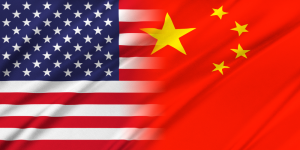Apple Fuels India’s Manufacturing Ambitions, But a US-China Trade Reset Threatens Progress

Anúncios
A Turning Point for India’s Global Factory Aspirations
As India takes strides toward becoming a major global manufacturing hub, the recent announcement of a trade “reset” between the United States and China threatens to disrupt Delhi’s ambitions.
The renewed diplomatic and economic engagement between Washington and Beijing has the potential to stall or even reverse the manufacturing investments that were shifting away from China and toward India.

US-China Tariffs Relaxed Overnight — What It Means for India 🇺🇸🇨🇳🔄
Last week, tariffs imposed during the Trump administration on Chinese goods destined for the US market dropped significantly — from a peak of 145% down to 30%.
Anúncios
By comparison, India’s tariffs remain slightly lower at 27%. This sudden tariff reduction came as part of a trade agreement hammered out in Switzerland, signaling a diplomatic thaw.
Experts at the Global Trade Research Institute (GTRI) in Delhi, including Ajay Srivastava, warn that this agreement could “stall” or even reverse the momentum of manufacturing investments relocating from China to India.
While India’s low-cost assembly capabilities may continue to survive, Srivastava emphasizes that value-added manufacturing growth is under threat.
Anúncios
Apple’s Bold Move to Shift iPhone Production to India 📲🇮🇳
Just weeks before the tariff rollback, Apple had sparked excitement in India and beyond by revealing plans to shift most of its iPhone production for the US market from China to India.
This move represented a significant vote of confidence in India’s manufacturing potential.
Yet, US President Donald Trump reportedly advised Apple CEO Tim Cook not to build more production capacity in India, citing the country as, one of the highest tariff nations in the world.
Despite this, many analysts believe India remains well positioned to become a near-term alternative supplier to the US.
Shilan Shah, an economist at Capital Economics, highlighted before the reset that approximately 40% of India’s exports to the US overlapped with Chinese exports, indicating substantial potential for substitution.
Indian Exporters Step Up to Fill the Gap 📈
Recent data provides encouraging signs that Indian manufacturers are capitalizing on the shift away from China.
New export orders from India surged to a 14-year high, according to a survey of Indian manufacturers.
Japanese brokerage firm Nomura also cited growing “anecdotal evidence” of India emerging as a beneficiary of supply chain diversification, especially in low- and mid-tech manufacturing sectors such as electronics, textiles, and toys.
The Strategic Decoupling — Is India the Long-Term Winner? 🤔
Despite the apparent reset between Washington and Beijing, some analysts argue that a deeper strategic decoupling between the US and China will continue to benefit India over the long run. Several factors support this outlook:
-
Narendra Modi’s government has shown increased willingness to open its economy to foreign investment after years of protectionism, improving India’s attractiveness as a manufacturing base.
-
Ongoing negotiations between India and the US for a trade agreement may position India to benefit further from the so-called “China exodus,” whereby global firms diversify their supply chains away from China.
-
India’s recent trade pact with the UK, which slashes tariffs on goods like whiskey and automobiles, showcases Delhi’s readiness to offer concessions in international trade talks.
Challenges and Competition Remain Fierce for India 🏭⚔️
Optimism around India’s manufacturing future is tempered by several challenges:
-
China is back in the game: The US-China trade reset signals that China remains a formidable competitor for manufacturing investment.
-
Other Asian countries remain attractive: Economists Sonal Verma and Aurodeep Nandi from Nomura caution that firms continue to consider other regional players such as Vietnam, Thailand, Cambodia, and Malaysia. These nations benefit from cheaper labor, simpler tax systems, and active free trade agreements, which India has struggled to match.
-
Ease of Doing Business: To capitalize fully on opportunities, India must implement serious reforms to improve the business climate and reduce regulatory burdens, areas that have long frustrated foreign investors.
-
Despite government initiatives like the Production Linked Incentive (PLI) scheme, India’s manufacturing share of GDP has remained stubbornly flat at around 15% for the past two decades.
Dependency on China’s Supply Chains Limits Growth Potential 🧩🔧
Another critical hurdle identified by analysts is India’s continued reliance on China for raw materials and components, especially in electronics manufacturing.
For example, although iPhones are increasingly assembled in India, many key parts are still imported from China.
Ajay Srivastava explained that India’s financial gains from iPhone production will only grow if more components are manufactured domestically, increasing the local value-added content.
Currently, Apple reportedly earns over $450 in profits per iPhone sold in the US, while India retains less than $25 per unit, despite the entire $1,000 retail price being counted as an Indian export.
Without deeper integration into the supply chain, including parts manufacturing and high-value activities, India’s export figures may grow only “on paper,” inviting scrutiny from US trade authorities without delivering substantial economic benefits at home.
Quality of Manufacturing Jobs and Investment Concerns 👷♂️🏭
The jobs created by the current wave of assembly operations are often low-skilled and low-paying, failing to develop a robust industrial ecosystem.
Unlike Nokia’s earlier experience in Chennai, where suppliers clustered around a single factory creating synergies, smartphone manufacturers today mainly import parts and lobby for tariff reductions, rather than building integrated supply chains.
There are even reports that some investments by companies may be smaller than the subsidies they receive from India’s PLI scheme, raising questions about the long-term sustainability and impact of such initiatives.
Potential Risks: India as a Transit Hub for Chinese Goods 🚚🔄
Concerns have been raised that some Chinese exporters might use India as a base to reroute products destined for the US, exploiting lower tariffs or favorable trade terms.
India’s top economic adviser reportedly welcomed Chinese businesses setting up export-focused factories, implicitly acknowledging India’s own industrial policies had failed to deliver comprehensive growth.
Experts warn that this practice could hinder India’s ability to build genuine local manufacturing capabilities and develop an independent industrial base.
The Road Ahead: Policies Needed to Realize Factory Ambitions 🔧🏗️
Despite high-profile announcements from companies like Apple, India still faces a long journey before it can fulfill its ambitions of becoming the world’s factory.
📢 Ajay Srivastava’s Policy Recommendations
| Focus Area | Key Recommendation |
|---|---|
| 💰 Production Costs | Slash manufacturing and operational expenses to boost competitiveness. |
| 🚚 Infrastructure & Logistics | Enhance transport networks and streamline supply chains. |
| ⚖️ Regulatory Environment | Establish long-term regulatory clarity and policy stability. |
In a recent social media post, he stressed that the US-China trade reset is more of a short-term damage control than a lasting solution.
India must commit to playing the long game or risk being sidelined in the fiercely competitive global manufacturing landscape.
Conclusion: India’s Manufacturing Future in a Volatile Global Trade Environment 🌐⚖️
India’s potential to emerge as a manufacturing powerhouse is undeniable, buoyed by shifting global supply chains, governmental reforms, and growing interest from multinational corporations.
However, significant structural challenges remain, including dependency on Chinese inputs, regulatory hurdles, and intense regional competition.
While the US-China trade reset may have temporarily slowed the momentum of investments flowing into India, the country’s demographic advantages, improving policy environment, and strategic trade negotiations could position it well for long-term gains.
To truly transform its manufacturing sector, India must go beyond tariff advantages and invest in developing local supply chains, streamlining business processes, and fostering an innovation ecosystem.
Only then can it realize its vision of replacing China as the world’s factory.







